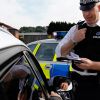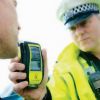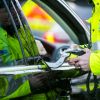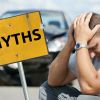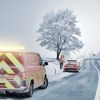Let’s take a look at winter driving’s biggest myths and set the record straight.
1. It’s illegal to drive in winter boots or wellies
FALSE
Rule 97 of the Highway Code says motorists should ensure “clothing and footwear do not prevent you using the controls in the correct manner”.
It’s down to motorists to make sure their footwork is up to the task of controlling a vehicle.
You should be able to show that you have full control of your car in the event that you’re stopped by police to check your footwear - which will be pretty tough if you have half a muddy field caked on your wellies.
2. Your car insurance is invalid if you fit winter tyres
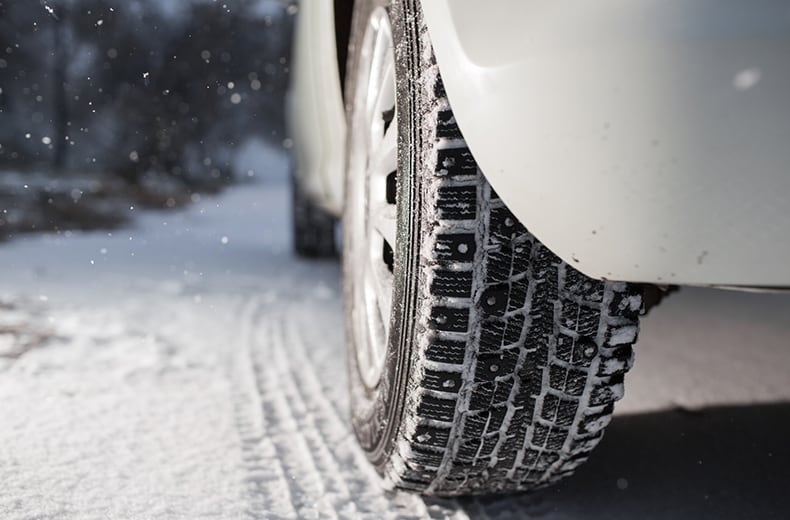
TRUE AND FALSE
Winter tyres have a deeper tread depth than standard tyres and are made from a softer compound that doesn’t harden so much in cold weather. They’re designed to disperse water and snow, allowing the rubber to move around – improving contact with the road.
Although safer than standard tyres, some insurance providers may consider winter tyres to be a modification. Modifications should be declared and unfortunately they usually increase the cost of your premium.
However, most providers in the UK have signed up to the Association of British Insurers Winter Tyres Motor Insurance Commitment. This recognises the safety benefits of winter tyres and means they can be fitted without having to tell your insurer.
Check with your provider to see if they’ve signed up to the winter tyre commitment.
Just make sure you change them before Spring! Because of their softer material, winter tyres wear out more quickly, give you worse fuel efficiency, and present traction and handling issues.
5 Star Defaqto rated cover
RAC Comprehensive Car Insurance Plus has been given a 5 Star Rating by Defaqto. Get a quote online today.


3. Leaving your car's engine running to warm it up or de-ice your windows invalidates the insurance if the vehicle is stolen
TRUE
You could be taking a massive risk by leaving your car unattended with the engine running, no matter what the reason.
Most policies have a ‘keys exclusion’ clause, meaning that you won’t be covered if your car is stolen while you leave the engine running.
4. Car crime is far more likely around Christmas
TRUE/FALSE
Do motor theft claims fall over Christmas? Sort of: whilst there are fewer claims on Christmas Day and Boxing Day compared to the rest of the year, the Christmas period as a whole tends to see an unfortunate spike in car crime.
According to the Office for National Statistics (ONS), last year, over 101,000 cars were stolen - with January and December having the highest totals for car crime.
As long as you exercise your usual levels of caution, you can tuck into your turkey worry-free!
5. You can be fined for leaving the engine running to defrost your windscreen
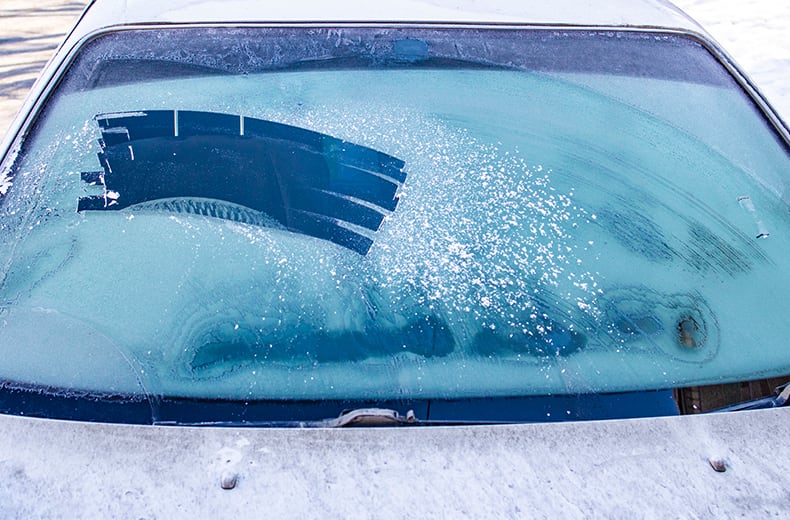
TRUE
Leaving your car running while stationary is often referred to as engine idling. It’s an offence under Rule 123 of The Highway Code and authorities have the power to issue £20 fixed penalties for any contravention.
However, the chances of being fined are slim as police forces in England and Wales only enforced 494 penalties between 2015 and March 2019.
6. Insurers will always pay out if you crash on ice as it’s not your fault
FALSE
As a driver you’re responsible for your actions behind the wheel. In cases where other road users aren’t involved you could find yourself with an ‘at fault’ claim.
If you’re in an incident involving another driver, all the relevant circumstances will be considered as usual. Remember, stopping distances could be up to 10 times longer on ice than under dry conditions.
7. You must carry a winter emergency kit in your car by law
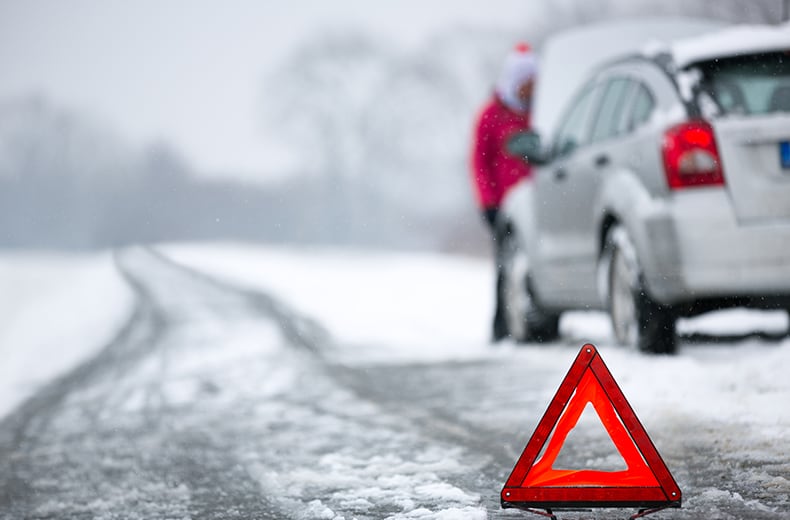
FALSE
There’s no law requiring drivers to carry any kind of emergency kit, although it’s definitely wise as the weather turns colder.
You may want to pack warm clothes, a de-icer and jump leads along with other helpful items.
8. It's illegal to drive with ice on your windscreen
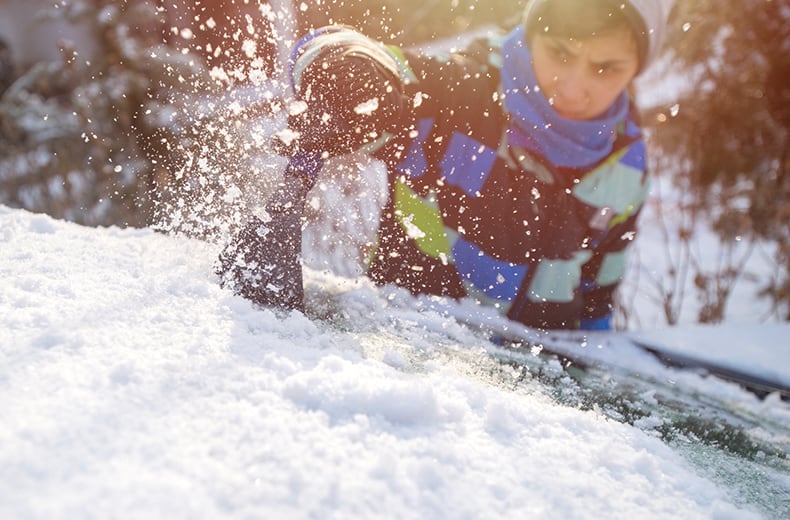
TRUE
Rule 229 of the Highway Code says: “Before you set off you MUST be able to see, so clear all snow and ice from all your windows.”
If your windscreen is obstructed in any way, the police can fine you £60. No matter how tempting it is to set off with a partially clear windscreen make sure your windows are fully de-iced before taking to the road.
- 12 ways you could accidentally invalidate your car insurance
- The top 10 cheapest cars to insure right now and why
- 7 car insurance myths debunked
In addition, whilst there is no law stating that it’s illegal to drive with snow on your roof, if it falls onto your windscreen or into the path of another vehicle then you could be fined for driving without due consideration. It’s not worth the risk, so always make sure your car roof is clear before you move off.
9. Floodwater damage isn’t covered by insurance
TRUE AND FALSE
Some insurers will cover floodwater damage. It’s best to check your policy with your provider, especially if you live in a flood-prone area.
If water is deeper than 4-6 inches (10-15cm), it’s best not to attempt to drive through it in an ordinary car… Unless you’re driving Bond’s submarine Lotus Esprit.
Has the weather caused you to get your vehicle stuck in the mud? Here's what to do.
10. Winter driving is dangerous because of reduced daylight hours
TRUE
This one should come as no surprise really.
According to The Royal Society for the Prevention of Accidents (RoSPA), around two in five of all collisions year round happen when it’s dark1.
It's difficult to be able to say that driving in the dark is more dangerous than driving in daylight; whilst there are more of us on the road in the day, there are a series of extra facors which make driving at night dangerous, chief of which is reduced visibility.
We also have to deal with hard-to see pedestrians, less-confident new drivers who may not have driven much after dark, and changes from well-lit to poorly-lit areas which demand our eyes adjust quickly.
Darkness is particularly dangerous when combined with poor weather and road conditions. Department for Transport statistics reveal that that there were 22% more accidents in snowy or icy conditions on motorways in 2017 outside daylight hours than the same conditions during the day2.
Don’t be a breakdown statistic: the RAC’s tips to keep us all moving
Drivers should remember their ‘FORCES’:
Fuel – Don’t risk running out of fuel – top up before you set out
Oil – check it’s at the right level to reduce the chances of overheating in traffic
Rubber – tyres need to be properly inflated and in good condition to give your car a safe, sure grip on the road. Your windscreen wipers also have to work extra hard in cold and wet conditions
Coolant – this does a vital job in ensuring the engine runs at the right temperature. If it’s not between the ‘min’ and ‘max’ levels, this could be the sign of a problem so contact a good garage without delay
Electrics – you’ll need your lights on during any heavy downpours and of course during the shorter days – so check they are all working. The electrics also control your indicators and windows, so check there are no problems
Screenwash – helps keep your windscreen clear

RAC sale – up to 33% off*
• Roadside cover from £5.29 a month†
• We get to most breakdowns in 60 mins or less
• Our patrols fix 4/5 breakdowns on the spot



